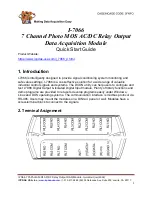
Description
2.2 Structure of PROFIBUS networks
PROFIBUS with STEP 7 V13
Function Manual, 12/2014, A5E03775446-AC
25
2.2.2
Passive components for optical networks
2.2.2.1
Fiber-optic cables
Types of fiber-optic cables
Data transmission with fiber-optic cables takes place through modulation of electromagnetic
waves in the range of visible and invisible light. These cables are made of high-quality plastic
fibers and glass fibers:
●
Plastic and PCF fiber-optic cables (Page 26)
●
Glass fiber-optic cables (Page 27)
The different types of fiber-optic cables provide solutions matched to the operating and
environmental conditions for the connection of components with each other.
Benefits
Fiber-optic cables offer the following benefits when compared with electrical cables:
●
Galvanic isolation of the devices and segments
●
No potential equalization currents
●
No impact on transmission path through external electromagnetic interference
●
No lightning protection elements required
●
No noise radiation along the transmission route
●
Low weight
●
Depending on the type of fiber you can implement cable lengths up to few kilometers at
even higher transmission rates.
●
No dependency of the maximum permitted distances on the transmission rate
Additional information
Additional information of the properties and technical specifications of the passive
components and connectors for fiber-optic cables is available in the PROFIBUS network
manual (
http://support.automation.siemens.com/WW/view/en/35222591
Содержание SIMATIC ET 200AL
Страница 2: ......
Страница 143: ......
Страница 218: ......
Страница 250: ......
Страница 296: ......
Страница 337: ......
Страница 365: ......
Страница 392: ......
Страница 419: ......
Страница 451: ......
Страница 483: ......
Страница 597: ......
Страница 648: ......
Страница 702: ......
Страница 739: ......
Страница 781: ......
Страница 804: ......
Страница 828: ......
Страница 853: ......
Страница 880: ......
Страница 906: ......
Страница 996: ...Diagnostics ...
Страница 1121: ......
Страница 1565: ......
















































